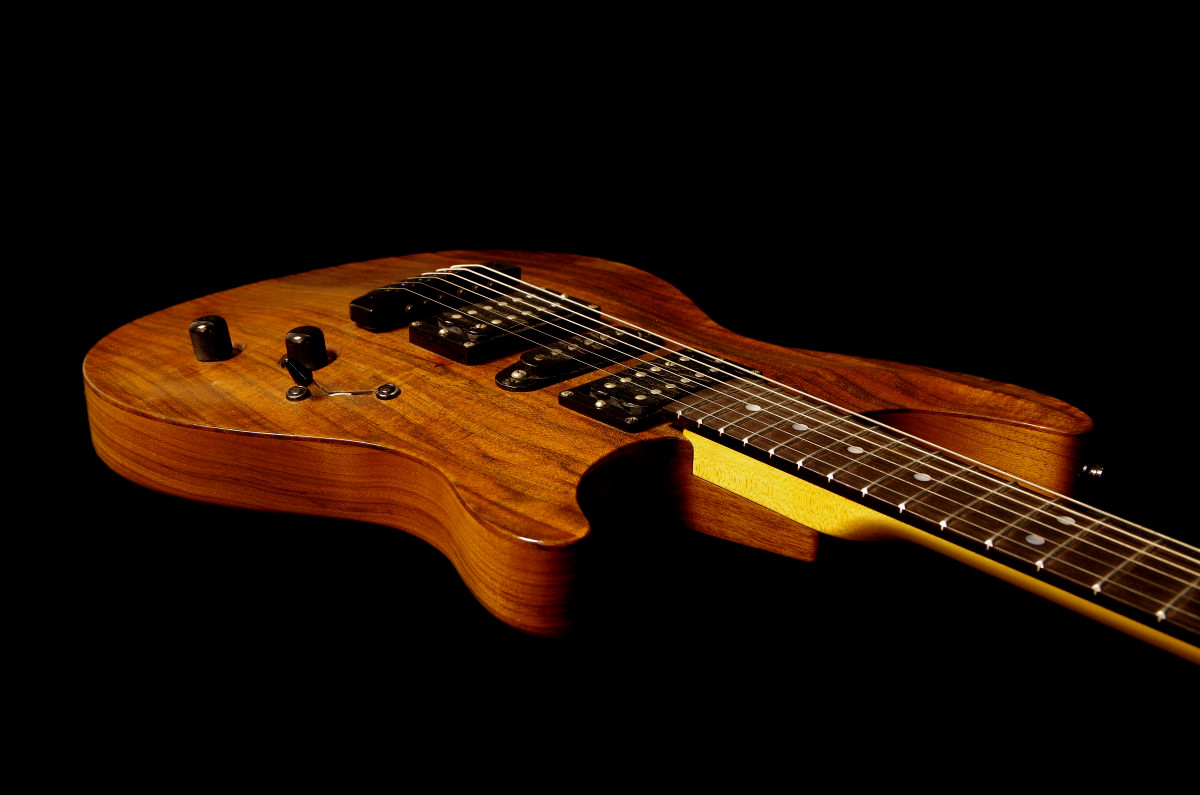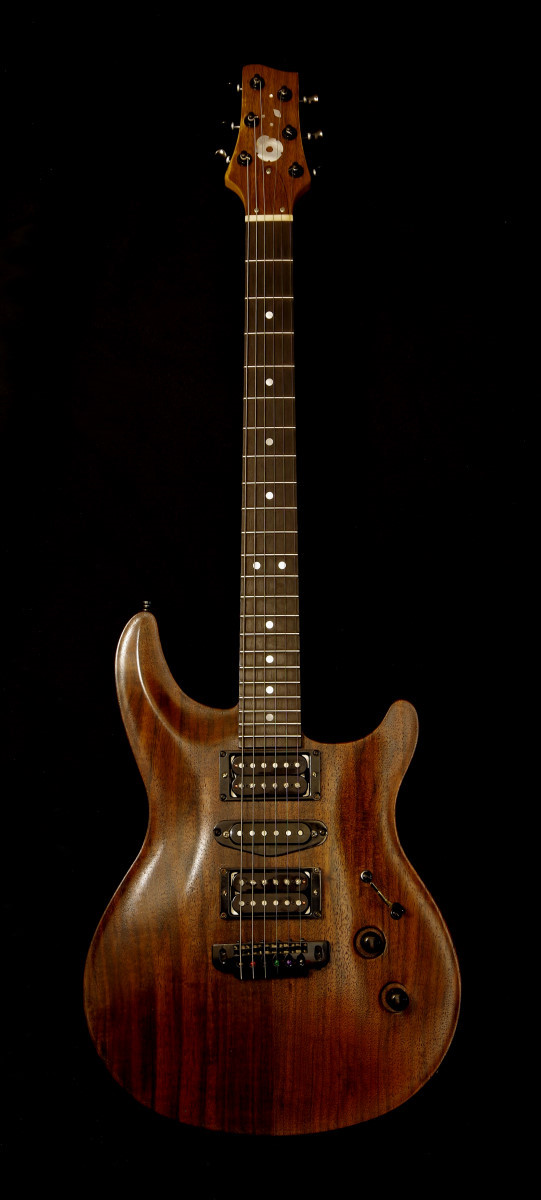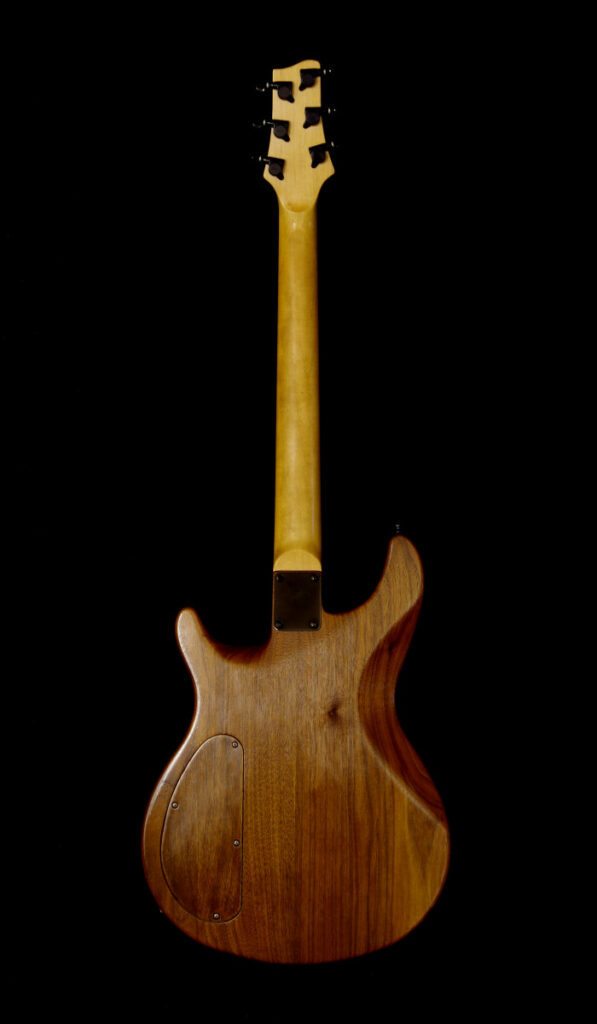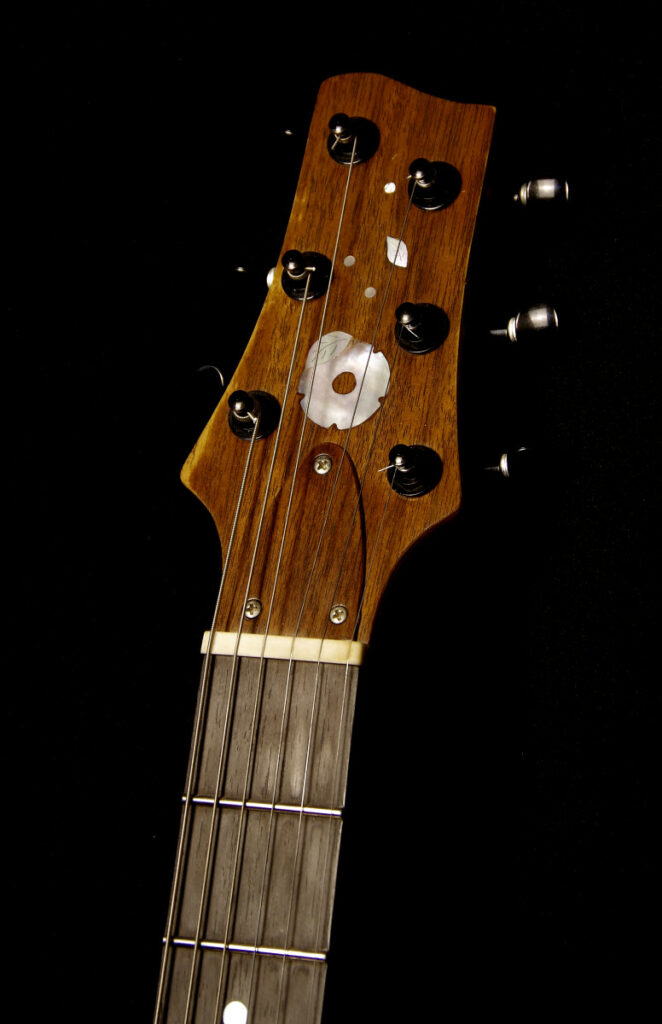

First Foray
2002
This was my first attempt at putting together a guitar.
As I write this, this guitar is twenty years old—bordering on vintage—and it’s difficult to know what I was thinking at the time. I know that I liked Paul Reed Smiths and couldn’t afford one. I also had some vague sense that I’d make the “end all” guitar that could do anything, I suppose in case I wound up needing to do a bunch of random session work and travel light (?). As it turns out, I’ve never done any session work, and have have built a lot more guitars, so I was wrong on both counts. I may have also had an odd, not-fully-formed sense of what was cool in guitars. Hence the “none more black” hardware and ludicrous electronics.
But it still works, and launched me into this rewarding hobby of imagining that I could built my way into musical talent.
Technically speaking, this was not the first instrument I made, despite being Serial #1. I made a 1/4 scale novelty violin and a genuinely terrible plywood mandolin before this, but I consider this my first “real” one. I’m not sure I was even really interested in music when I made the first two, but by the time I made this, I’d already owned a couple factory-made guitars, had some idea of what they’re supposed to feel like and do, and (primarily) had the sense to get the neck and body from Warmoth, who make it easy to get a parts guitar most of the way there.
Tell me more
The guitar is walnut, with a figured, carved walnut top covering up the chambering that makes it lighter. The neck is maple with a walnut peghead overlay and, for some reason, mother of pearl inlay. The wood is finished with Birchwood Casey Tru-Oil, which has become my standard way of finishing guitars. It can be wiped on (doesn’t require an elaborate spray setup), is pretty forgiving, and it looks good. The guitar has a Gotoh 510 wraparound one-piece bridge and Gotoh tuners, and Seymour Duncan Alnico II Pro pickups. All three of them.
I went a little crazy with the pickups trying to make it as versatile as possible. Position 1 is the bridge humbucker, position 3 is both humbuckers, and position 5 is the neck humbucker. In positions 2 and 4, the humbuckers split and the middle pickup turns on, so it can approximate the sound of a Strat in the notch. But wait, there’s more: the tone knob is also on a push-pull pot, and when it’s lifted, there are more combinations. I may not even remember them all. I know it can do neck and bridge single coils (like a Tele in the middle position) and I think there are settings to just get the neck or bridge single coil alone. There’s also a setting that’s just the bridge humbucker, but with the volume and tone knobs bypassed so that it dumps straight to the output jack. I have no idea. I think there are also some redundant positions with the tone knob pulled, just so that it doesn’t have a secret “off” mode.
Sound
A lot of people see this and think it’s some kind of metal guitar or a shredder, but it’s not. I don’t know much about metal, and I assume that shredding is more of a state of mind than a piece of equipment, but from what I do know, I don’t think this would be that appealing to actual metalheads. These pickups are medium output at best, it’s a hard tail, it’s got fret wire that’s closer to a Fender than a Jackson, etc. I’m pretty sure that Slash had these pickups in his Les Paul when he recorded Appetite, and in my mind, that’s about where it tops out on the scale of aggression. It will go really far the other way though, and will do a lot of dainty things.
Here is a sample: it starts off clean (straight into a Fender Deluxe Tone Master, DI) in position 2, then switches to the bridge humbucker with a Dubious Distinction kicked in.




